We’re not going to deny that zoos started as places purely for entertainment, but as society has evolved so too has the role of a modern zoo.
We will apologise for our history, but not our future. Today, good zoos are local and global conservation agencies, modern day arks in an age of unprecedented extinction.
As species extinction accelerates, zoos are becoming increasingly necessary. It’s time to support good zoos.
Here are some points to consider:
- All zoos are not the same
- Good zoos care
- We help save wildlife
- We work beyond our gates
- We don’t just focus on charismatic species
- Zoos are research vessels
- We wish zoos didn’t exist
- We wish the utopian ideal of the wild existed
- We inspire people to give a $hit about wildlife
All zoos are not the same
What’s in a name? The term ‘zoo’ is widely used and encompasses everything from menageries to world class conservation based zoos. However just as hotels have one star and five star versions, so do ‘zoos’. Just as all restaurants are not the same, all zoos are not the same.
Perth Zoo is a five star zoo, we are an accredited zoo. What does this mean? Well it means our operations have been independently audited by the Zoo and Aquarium Association. Our facilities, exhibits, animal activities have all been inspected and we’ve been given the tick of approval.
The regional accreditation program aims to provide animals in human care with the best possible welfare. It is awarded to zoos like Perth Zoo, which doesn’t just meet legal minimum requirements but strives for animal welfare excellence.
We’re often told that: “The animals should go to a sanctuary or wildlife park”, but guess what? A sanctuary or wildlife park is the same as a zoo with a different name but usually they have less resources, staffing, regulations or funding.
More information about accredited zoos can be found here: http://www.zooaquarium.org.au/
Good zoos care
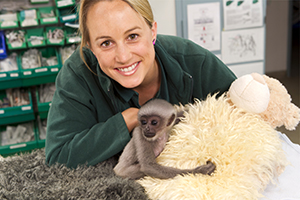
We care, we care deeply. We have staff with years of experience in delivering the highest levels of animal care, based on the most up-to-date animal science. We are committed to being leaders in animal care. We care for animals and we care for the future of animals on our planet because the alternative for many animals is extinction.
We are 100% committed to looking after the animals that call Perth Zoo home. It isn’t just a nine to five job, it’s a commitment. I’ve seen keepers sleeping in animal night quarters tending to their needs at all hours of the night, I’ve seen vets and keepers cry when one of their loved animals has passed away, or when difficult decisions have to be made in the best interest of the animals, but more often than not I’ve seen their resilience as they focus on the next animal that needs their TLC, despite how crappy they’re feeling.
Even on the hardest day, no matter what we say, we DO take our work home with us, and we are always thinking about the animals in our care.
Providing the best life possible for the animals that we have the privilege to look after is at the core of everything we do. That’s why we have an animal welfare charter that underpins our daily operations.
We help save wildlife
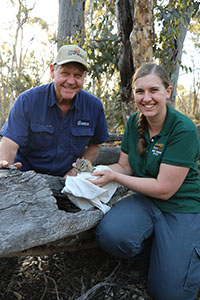
Saving Wildlife. It’s not just our slogan, it’s what we do.
It might sometimes appear that we deal with the ‘cute and fluffy’ for a living, but the reality is every day we are at the coal face of the biggest extinction crisis since the age of dinosaurs.
Just recently the Living Planet Index revealed we could lose two-thirds of the planet’s wild animals by 2020, meanwhile a 2010 study by the International Union for the Conservation of Nature found that conservation breeding in zoos and aquariums played a role in the recovery of 28% of the species listed as threatened in the wild.
Our breeding programs have been responsible for bringing animals back from the brink of extinction including local amphibians, Numbats, Australia’s rarest reptile, the Western Swamp Tortoise and the Chuditch which thanks to our efforts had its conservation status reduced from Endangered to Near Threatened. But just because we’ve had some success, it doesn’t mean we stop, nope, we continue to expand and develop our zoo breeding programs to save local wildlife and provide insurance populations of threatened species.
Whilst we do out bit in WA, our global zoo colleagues have averted the extinction of the Golden Lion Tamarin, Californian Condor, Prezwalski Horse and the Scimitar-Horned Oryx, to name a few.
We work beyond our gates
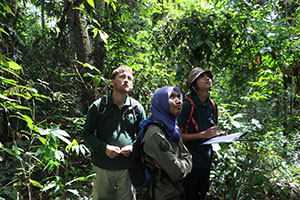
A lot of people still think that a ‘zoo’ means enclosures, cages. They don’t realise that increasingly the role of zoos extend beyond the gates and into the wild. In fact, Perth Zoo contributes over $2.5million to wildlife conservation annually and has distributed around $350,000 per annum to projects outside the zoo . This has totalled more than $2.8 million over the past 7 years.
At Perth Zoo we fund anti-snaring teams to protect African Painted Dogs, orangutan rehabilitation and release programs, empower Zambian children to become wildlife ambassadors, provide Papua New Guinean villagers with alternate livelihoods to reduce hunting of tree kangaroos, we work with TRAFFIC the international wildlife trade monitoring network to gain intelligence on sophisticated wildlife poachers, we fund researchers on Komodo Island to learn more about the world’s biggest land lizard and we’re helping gibbons out swing extinction funding wildlife patrol units in Pu Mat National Park in Vietnam.
And let’s not forget our Aussie critters. Over the last 20 years we’ve bred and released back to the wild more than 3,800 local threatened Australian animals!
We don’t just focus on charismatic species
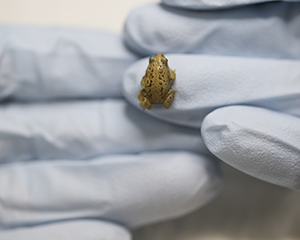
When people think of zoos they think of the mega-fauna, the tigers and lions and bears, oh my!
But a lot of our work focusses on less charismatic species. If we were all about profit why would we have a whole section of the Zoo behind the scenes dedicated to breeding animals such as the tiny brown mottled White-bellied and Orange-bellied frogs? The ground dwelling and cryptic Western Ground Parrot, the rodent looking Dibbler?
It’s because we’re about SAVING WILDLIFE. These creatures are all animals of conservation concern so we have teams of people dedicated to their care, breeding and recovery programs.
Zoos are research vessels
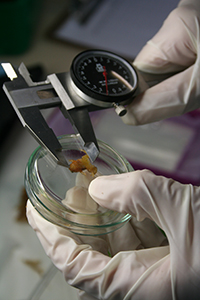
Zoos are full of scientists. Perth Zoo is the only WA Government agency with an annual scientific communications KPI. Last year we produced 42 research communications contributing greatly to the knowledge of wildlife.
Some of our projects with partner organisations and universities include making an artificial mud for some critically endangered frogs to lessen our environmental footprint, constructing the Taj Mahal of artificial tree hollows which has seen increased wild breeding of endangered cockatoos, discovering more about the olfactory senses of elephants and even playing mother nature by creating weather pressure systems to encourage amphibian breeding.
We wish zoos didn’t exist
If you ask anyone who works in a zoo, many of us would say: “We wish zoos didn’t exist!”
Yep, you heard right, because if zoos didn’t have to exist it would mean that the wildlife conservation crisis was no longer a threat. It would mean we wouldn’t have to have populations of animals in human care as an insurance against wild extinction, it would mean animals would not just be surviving but thriving in the wild.
We wish the utopian ideal of ‘the wild’ existed
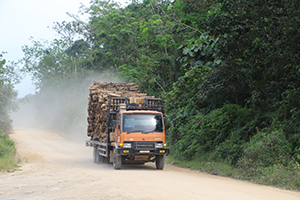
Let us let you into a secret, ‘the wild’ doesn’t exist. We wish it did, but increasingly wild habitat is getting knocked down and encroached upon at alarming rates as the 7 billion human population expands.
We’re often told that: “The animals should be in the wild.” We agree, but let’s be realistic, the wild means almost certain death. Death from poachers, death from disease, death from lack of habitat, food, shelter. Death due to mankind.
We’d love to release all our animals to the wild. But that would be completely irresponsible unless the habitat is secure.
When we do release animals to the wild, they’re monitored intensely and in the case of our zoo born orangutans which are released to a protected area of the Sumatran jungle we also fund anti-poaching patrols and community education programs. It’s a 360 degree conservation approach.
We inspire people to give a $hit about wildlife
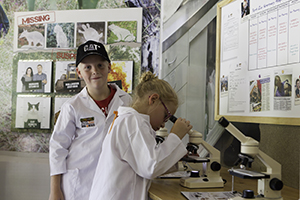
Nothing can replace coming to a zoo, hearing, smelling and (sometimes) feeling an animal to get a real appreciation of their wonder and the need to protect them. Education makes a big difference for wildlife conservation; with research showing that people exposed to nature at a young age grow up more likely to appreciate and conserve it.
In fact last year 97% of our visitors agreed that our exhibits and displays educate visitors about conservation and problems facing wildlife, whilst 95% of visitors agreed that Perth Zoo encouraged them to be more conscious about conservation of wildlife.
We are passionate about education.
The world zoo and aquarium community welcomes over 700 million visitors annually, that’s a powerful catalyst for positive wildlife change and one we’re very proud to be part of.
It’s time to support good zoos
We may be a little zoo and one of the most isolated in the world. But we are a small zoo with a big agenda, SAVING WILDLIFE!
We are in the midst of a global extinction crisis. Rather than zoo-bashing, help us punch well above our weight for wildlife and wild habitats.
Danielle Henry - Perth Zoo Media and Communications Manager